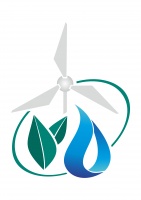Drip irrigation of corn in the Gissar Valley
| Title | Drip irrigation of corn in the Gissar Valley |
|---|---|
| Category of tools | Drip irrigation system |
| Field of application |
|
| Usability of practice for adaptation to climate change | High |
| Implemented by | NPO “TajikNIIGiM” (“Research and Development Institute of Hydraulic Engineering and Reclamation of Tajikistan” Research and Manufacturing Association) |
| Used by |
Country: Tajikistan Province: Districts of Republican Subordination District: Rudaki Settlement: Radzhabov Farm |
| Local specifics |
|
| Practice usage period |
Start date: 01.01.2000 End date: 31.12.2003 |
| Problem solved through this practice |
Shortage of irrigation water; |
| Tools used in the practice |
Corn drip irrigation system |
| Description of the practice and its results |
Actions:
Results: Financial and economic: increased labor productivity and farmer incomes, reduced production costs. Ecological: production of ecologically clean goods; prevention of water losses and soil erosion as well as improving soil ecological and reclamation condition. Technical: twofold (52%) increase of corn yields compared to furrow irrigation, 51% saving of irrigation water. Social: increased wellbeing of local residents due to better agricultural yields; reduced hard manual labor. |
| Lessons learnt and recommendations made |
Lessons learnt: Application of drip irrigation ensures higher corn productivity and water saving as well as allows improving soil structure, watering efficiency, etc. Recommendations: It is necessary to widely introduce drip irrigation systems to build up the efficiency of water and land resources, reduce manual labor costs and save irrigation water. |
| Source of practice |
Domestic tools (outcomes of research by domestic R&D organizations) |
| Readiness for implementation |
1. Cost of implementation: High 2. Approximate cost of investment per 1 ha: $3,500/ha 3. O&M costs: High 4. Expert support: Needed at implementation stage |
| Brief information on the project |
Project title: Drip irrigation of corn in Gissar District. Project duration: early 2000-late 2003. Project goal and objectives: introduction of drip irrigation systems for corn; observance of optimal irrigation mode(s) and techniques ensuring 100 dt/ha and above corn yields with minimal energy consumption in the conditions of the Gissar Valley. Project beneficiaries: land and water users of Yu. Radzhabov Farm Project implementer: NPO “TajikNIIGiM”. |
| Funding source | National budget, NPO “TajikNIIGiM” |
| Information sources |
Research report by NPO “TajikNIIGiM”, Dushanbe, 2003, 46 p. |
| Form submission date | 02.04.2018 |
| Print Compare with other practice |




